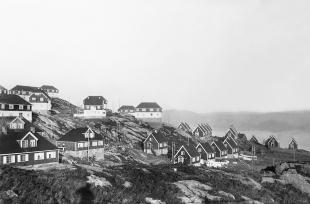Large incomes from fish exports and shipping created an acute pressure to invest. This led to the establishment of industry financed by Bergen shipping capital: A/S Den Norske Superfosfatfabrik (The Norwegian Super Phosphate Factory). This plant was expanded during the years 1916-20, a factory for the production of fertilisers that previously had to be imported, based on electric power. The share capital was more than NOK 10 mill., the workforce less than 100 men.
Together with a large herring oil factory, a couple of smaller plants for the production of gas accumulators, lime and mortar, this nonetheless represented enough workplaces to allow the place to pass the “community density limit” in 1920. The high number of production buildings, workers’ dwellings and administrative buildings gave the place an impression of a community, but this was not to last for long. The changing economic situation in the 1920s led to stop in production at the phosphate factory, the capital was lost and the main complex was left standing until new activity was started again in the 1930s; A/S Norwegian Talc. The herring oil factory was closed down in 1974, but since the opening of the bridge in 1972, Knarrevik has nevertheless become a key industrial centre or an “industrial park” in the municipality, with stone quarry, mechanical workshop and a recycling plant for paper.


